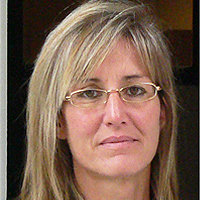Human mesenchymal stem cells conditioned media promotes the wound healing process - An in vitro study
Published on: 8th November, 2019
OCLC Number/Unique Identifier: 8333008907
Mesenchymal stem cells (MSCs) conditioned medium (CM) has a promising prospect towards skin regeneration. Therefore, human dental pulp and adipose stem cells (DPSCs and ADSCs) were isolated, propagated and evaluated for their stemness and genetic stability over time in culture before making CM. We aimed to characterize the applicability of lyophilized ADSCs and DPSCs derived CM (AD-CM and DP-CM) at 5 mg, 10 mg and 20 mg for wound healing process. The ability of wound closure was assessed by direct human dermal fibroblast cell scratch assay, treated with variable concentrations of AD-CM and DP-CM in vitro. Additionally, we also assessed the expression of different cytokines and growth factors secreted from ADSCs and DPSCs in the CM relevant to the wound healing by cytokine array analysis. Our data demonstrates a significant effect of both the AD-CM and DP-CM in wound healing within 24 hrs compared to that in control.
The rising role of natural killer cells in patients with malignant hematological disorders and in recipients of hematopoietic stem cell transplantation
Published on: 1st October, 2019
OCLC Number/Unique Identifier: 8333010200
Natural killer (NK) cells, the third population of lymphoid cells, comprise 5%-25% of peripheral blood (PB) lymphocytes and represent the first line of defense against infections and tumors [1-7]. They can be derived from: bone marrow, PB, cryopreserved umbilical cord blood (UCB), human embryonic stem cells (hESCs), induced pluripotent stem cells (iPSCs), and various cell lines such as NK-92 and KHYG-1 [1]. NK cells; which have been divided into cytotoxic, tolerant, and regulatory subsets; are classified into: (1) naïve CD56 bright CD 16 dim CD 3 dim cells, (2) mature CD56 dim CD16 bright CD3 dim cells, and (3) lymphoid tissue-resident CD69+/CXCR6+ NK cells [1,2,8-11]. Although NK cells have been traditionally considered as part of the innate immune system, they have recently been shown to exhibit many of the features associated with adaptive immunity [8,12]. The functions of NK cells which are influenced by several cytokines include: elimination of infected cells, destruction of cancer cells, reducing the incidence of graft versus host disease (GVHD) following hematopoietic stem cell transplantation (HSCT), and regulation of pregnancy outcome [10,11,13].
Dr. Saul Hertz Discovers the Medical Uses of Radioiodine (RAI)
Published on: 13th September, 2018
OCLC Number/Unique Identifier: 7856192339
Primary sources document Dr. Saul Hertz (1905 - 1950) as conceiving and developing radioiodine (RAI) as a diagnostic tool and as a therapy for thyroid diseases. Dr. Hertz was the first and foremost person to develop the experimental data on RAI and apply it to the clinical setting.
Saul Hertz was born on April 20,1905 to Jewish parents who had immigrated to Cleveland, Ohio. He received his A.B. from the University of Michigan in 1925 with Phi Beta Kappa honors. After graduating from Harvard Medical School in 1929, at a time of quotas for outsiders, he fulfilled his internship and residency at Cleveland’s Mt. Sinai Hospital.
In 1931, he came back to Boston to join the newly formed Thyroid Unit at The Massachusetts General Hospital serving as the Chief from 1931 - 1943.
Advances in the use of GABAergic interneurons for the treatment of epilepsy
Published on: 4th September, 2019
OCLC Number/Unique Identifier: 8333008407
Forebrain GABAergic neurons, the main inhibitory type of neuron in the cortex and hippocampus, represent a highly heterogeneous cell population that has been implicated in the predisposition to epilepsy and the onset of seizure. Earlier attempts to restore inhibition and reduce seizure in animal models of epilepsy have been carried out using embryonic basal forebrain tissue as source of immature GABAergic progenitors in cell-based therapies, with promising results. For therapeutic strategies this approach appears unrealistic, while the use of pluripotent stem cells to obtain immature GABAergic neurons opens new and promising avenues. Research on neural stem cells and pluripotent stem cells has greatly advanced and protocols have been established to efficiently direct progenitor cells to differentiate towards the GABAergic lineage. However, being highly heterogeneous, these neurons are difficult to be fully represented in vitro. Better knowledge on the expressed gene profiles, at single cell level, and the differentiation trajectory of these neurons will consent a more precise monitoring of the differentiation steps. Here we review the current literature about how to obtain and characterize genuine inhibitory neurons, how these can be grafted in animal models (and one day possibly in human) and which diseases could potentially be targeted and the efficiency of therapeutic outcome. The main obstacles that need to be overcome are: a) choice of an appropriate animal model, b) availability of human cells prone to GABA differentiation, c) the full representation of all IN subtypes, their proportions and their physiological activities, d) how to monitor them on the long-term after transplant.
Application of autologous adipose-derived stem cells for thin endometrium treatment in patients with failed ART programs
Published on: 12th February, 2019
OCLC Number/Unique Identifier: 8012133540
One of the factors of assisted reproduction technology (ART) success is an adequate growth and development of endometrium. At the end of follicular phase of menstrual cycle endometrium reaches its greatest thickness. It is believed that there is a critical limit of endometrial thickness beyond which the implantation of embryo is unlikely or impossible [1-5]. In practice of ART programs ultrasound measurement of endometrial thickness is used to evaluate uterine lining growth. Scientific literature is debatable as to what thickness of endometrium should be considered optimal, some researchers emphasize the negative impact of “thin endometrium” on the success of ART programs [1-12], while others do not agree [6,7,9]. Nevertheless, when endometrial thickness in ART program does not exceed 6 mm the chance of pregnancy occurring is very low (Kumbak B, et al. 2009).
Adaptive planning and toxicities of uniform scanning proton therapy for lung cancer patients
Published on: 10th September, 2018
OCLC Number/Unique Identifier: 7869162666
Purpose: Adaptive planning is often needed in lung cancer proton therapy to account for geometrical variations, such as tumor shrinkage and other anatomical changes. The purpose of this study is to present our findings in adaptive radiotherapy for lung cancer using uniform scanning proton beams, including clinical workflow, adaptation strategies and considerations, and toxicities.
Methods: We analyzed 165 lung patients treated using uniform scanning proton beams at our center. Quality assurance (QA) plans were generated after repeated computerized tomography (CT) scan to evaluate anatomic and dosimetric change during the course of treatment. Plan adaptation was determined mutually by physicists and physicians after QA plan evaluation, based on several clinical and practical considerations including potential clinical benefit and associated cost in plan adaption. Detailed analysis was performed for all patients with a plan adaptation, including the type of anatomy change, at which fraction the adaption was made, and the strategy for adaptation. Toxicities were compared between patients with and without plan adaptation.
Results: In total, 32 adaptive plans were made for 31 patients out of 165 patients, with one patient undergoing adaptive planning twice. Anatomy changes leading to plan adaptation included tumor shrinkage (17), pleural effusion (3), patient weight loss (2), and tumor growth or other anatomy change (9). The plan adaptation occurred at the 15th fraction on average and ranged from the 1st to 31st fraction. Strategies of plan adaptation included range change only (18), re-planning with new patient-specific hardware (9), and others (5). Most toxicities were Grade 1 or 2, with dermatitis the highest toxicity rate.
Conclusion: Adaptive planning is necessary in proton therapy to account for anatomy change and its effect on proton penetration depth during the course of treatment. It is important to take practical considerations into account and fully understand the limitations of plan adaptation process and tools to make wise decision on adaptive planning. USPT is a safe treatment for lung cancer patients with no Grade 4 toxicity.
Preliminary Report on the Effect of Mesenchymal Stem Cell Therapy in Patients with Chronic Lung Allograft Dysfunction
Published on: 28th August, 2018
OCLC Number/Unique Identifier: 7844548189
Background: Mesenchymal stem cell (MSC) effects can shift immune responses toward anti-inflammatory and tolerogenic phenotypes, potentially helping patients with bronchiolitis obliterans syndrome (BOS).
Methods: We evaluated the effect of infusing allogeneic MSC intravenously in 9 patients with moderate BOS refractory to standard therapy who were not candidates for retransplant, dividing them into 3 dosing groups: Group 1, 1×106 MSC/kg (n=3); Group 2, 2×106 MSC/kg (n=3); and Group 3, 4×106 MSC/kg (n=3). We recorded pulmonary function tests, laboratory variables, and serum biomarkers pre- and post-MSC infusion.
Results: These patients had significant decline in forced vital capacity (FVC) and forced expiratory volume in 1 second (FEV1) over 1 year pre-MSC infusion (mean ± SD) FVC, 3.11±0.98 L, and FEV1 1.99+0.64 L versus FVC 2.58±1.03 and FEV1 1.61±0.52 just before infusion (P<0.05); representing a mean loss of 530 mL in FVC and 374 mL in FEV1 over 12 months. One year post-MSC infusion, mean FVC and FEV1 increased to 2.66±1.01 L and 1.63±0.55 L, respectively (changes no longer significant compared to before MSC infusion). Patients in Group 1 showed elevation of tolerance-inducing T regulatory cells and increased levels of epidermal growth factor. Tolerance-inducing Th-2 cytokines increased in Groups 1 and 2. These changes were not significantly different in these small sub-groups.
Conclusion: MSC infusion appears to slow down or reverse the progressive decline in lung function in some patients with moderate BOS, possibly by inducing anti-inflammatory effects and promoting cell proliferation and angiogenesis.
A flow perfusion bioreactor with controlled mechanical stimulation: Application in cartilage tissue engineering and beyond
Published on: 13th June, 2018
OCLC Number/Unique Identifier: 7815003397
To repair articular cartilage (AC) defects in osteoarthritic patients, one approach is to engineer three-dimensional grafts with physicochemical properties similar to endogenous AC. Such grafts can be grown in bioreactors that provide environmental conditions favoring chondrogenesis. Studies show mechanical stimulation during the culturing process greatly enhances development of functional engineered grafts. A review of literature on bioreactor options reveals a lack of capacity to simultaneously stimulate cells with a combination of shear stress and oscillating hydrostatic pressure, both of which are important parts of the in vivo AC environment. It is hypothesized that combining both forces in a new bioreactor design will contribute to better AC tissue growth. In this paper, we provide a brief review of bioreactors and describe a new computer-controlled perfusion and pressurized bioreactor system, and the novelty of its control programming features for service in a host of applications. We briefly summarize results on synergistic effects in employing perfusion, oscillating hydrostatic pressure in a scaffold free environment and with the addition of encapsulation for inducing chondrogenesis. We further describe efforts to modify the newly developed system to include a continuous flow and pressurized centrifugal mode to enhance further the capabilities for inclusion of very high shear stresses. Applications for several other cell and tissue engineering approaches are discussed.
Stoichiometric approach to redox back titrations in ethanol analyses
Published on: 11th June, 2019
OCLC Number/Unique Identifier: 8165181157
This article refers to calculations involved with determination of ethanol, analyzed according to redox back titration principle. A quantitative reasoning, based on logical sequence of statements, is presented for derivation of the formulas required to calculate the results of chemical analyses according to stoichiometric principles. The titrations are considered as two-step analytical procedures. This way, one can gain an insight into a classical redox titration and get a knowledge on the advantages of back titrations.
Synthesis and Biological Evaluation of Fluorescein-Tagged 1-Methyl-o-carborane for Boron Neutron Capture Therapy
Published on: 26th October, 2018
OCLC Number/Unique Identifier: 7905963630
Fluorescein was conjugated with 1-methyl-o-carborane and the resulting bioconjugate was biologically evaluated through microscopic and flow cytometric studies in pancreatic cancer and squamous cell carcinoma cell lines. The uniform distribution of this bioconjugate, as well as its moderate cytotoxicity and higher boron content relative to present boronated delivery agents sodium borocaptate (BSH) and boronophenylalanine (BPA), provide justification for its further evaluation as a potential delivery agent for BNCT.




